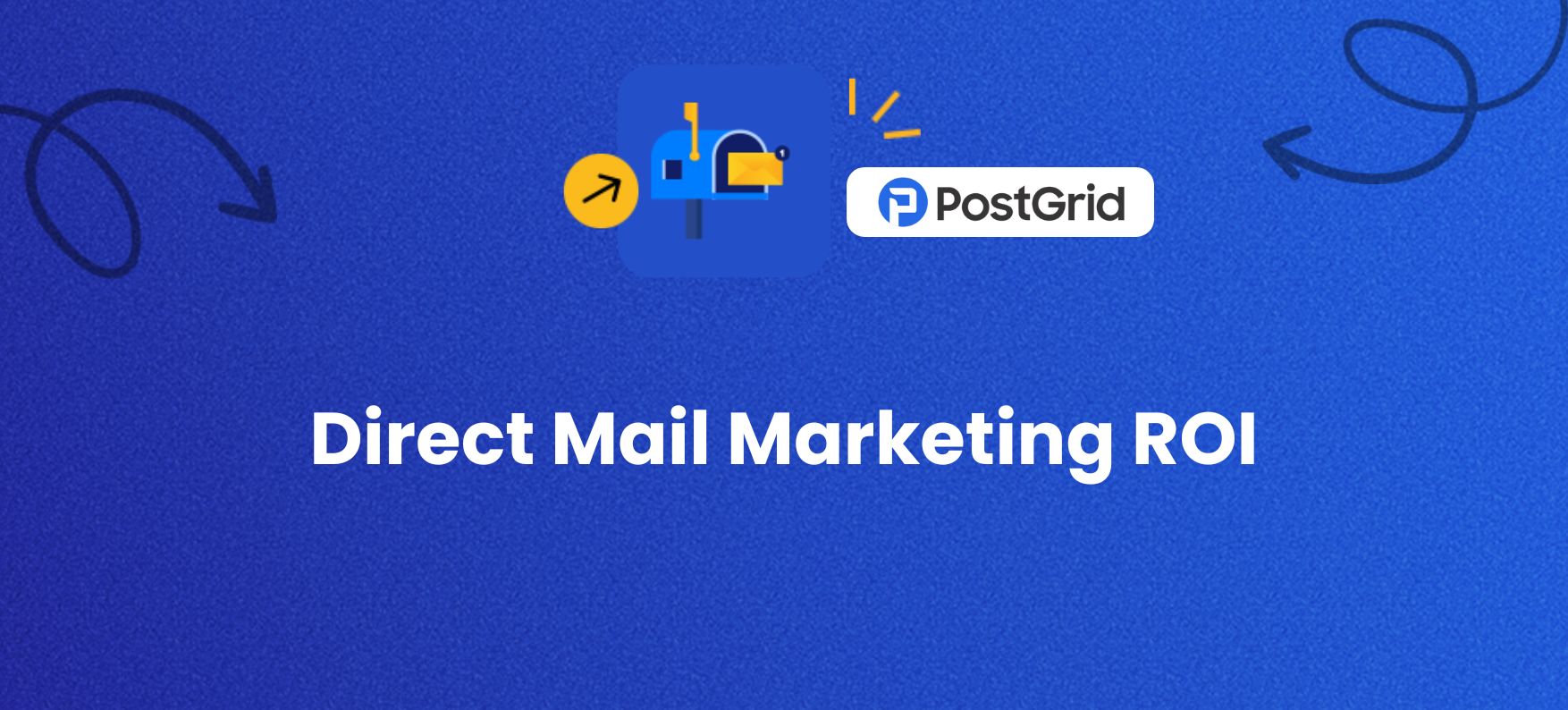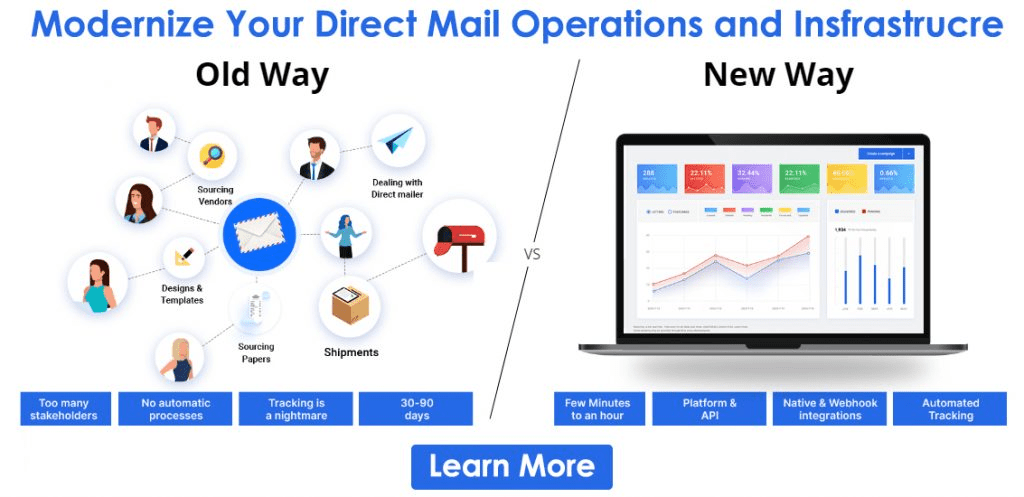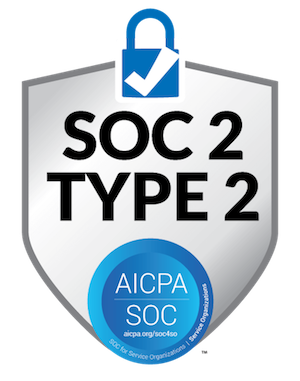
How Direct Mail ROI Performs Better than Other Channels?
Direct mail marketing is more effective and yields a higher return on investment than any other digital communication channel. It is more shareable and has a typical lifespan of 17 days in a household. Around 88% of the age group of 35 to 49 years believe direct mail is very useful.
However, the direct mail ROI could depend on your campaign type, including customer acquisition, retargeting, or retention. You should closely monitor the return on investment and response rate to gain a deeper understanding of your direct mail marketing campaign’s value.
This blog will help you learn everything about direct mail ROI, best mailer types, response rates, and calculation formulas. We will also explore some of the best practices to increase your direct mail return on investment.

Key Takeaways
- Direct mail marketing yields higher ROI than most digital communication channels.
- The ROI figure helps you understand the sales numbers against the expenditure on a marketing campaign.
- Direct mail response rates depend on the industry niche and particular offerings of a business.
- To calculate a campaign’s ROI, you should consider the cost per piece, response rate, campaign cost, conversion rate, customer retention rate, and close rate.
- Direct mail is more targeted and faces less competition than other channels.
- Postcards ensure the maximum direct mail ROI for an organization.
- Target audience, timing, and personalization are the primary factors behind a direct mail campaign’s success.
- An automated solution gives you superior tracking and reporting tools to calculate campaign ROI.
Direct Mail Marketing Quick Overview
The 2023 Association of National Advertisers (ANA) response rate report suggests that direct mail marketing ROI surpasses most digital channels.
Direct mail ROI outperforms every other marketing media by providing an outstanding ROI of 161% while sending mailers to house lists. In comparison, email marketing for the same audience could only yield an ROI of 44%.
Many businesses consider direct mail marketing for customer acquisition, retargeting, or retention. The report claims email marketing (80%) was the most preferred method for campaigning. Most companies are missing out on the advantages of direct mail marketing over digital advertising.
Automation technology enables online tracking with QR codes or Personalized URLs (PURLs). Consider this chart to understand the ROIs of campaigns by each medium;
| Medium | Type | Average ROI |
| Direct Mail | House Lists | 161% |
| House Lists | 44% | |
| Paid Search | Branded Keywords | 38% |
| Social Media Advertising | 21% | |
| SMS | 20% | |
| Digital Display Advertising | 23% |
Source: The 2023 ANA Response Rate Report
What is the ROI of Direct Mail Marketing?
Return on Investment (ROI) refers to the money you get from sales against your investments when running a marketing campaign. These numbers suggest how well your campaign performed among the recipients.
Your mailer’s success ultimately depends on how well it performs after it reaches the consumers’ mailboxes. The success relies on numerous factors, including the design, printing techniques, offer, CTA, copy, headlines, and timing. A marketing team must use proactive measures and proper planning to ensure a good ROI for their direct mail campaigns.
The Golden Formula to Calculate ROI
You can start by taking the total sales from your campaign and dividing it by your marketing expenditure.
Follow this to find ROI direct mail:
“Marketing ROI = Campaign Sales / Campaign Cost”
Let’s understand this with an example. Imagine you are sending 500 newsletters with a total expenditure of $500. However, the campaign only resulted in 10 responses. The response rate will be only 1%.
But if five of these respondents buy your products worth a total of $2000. The return on investment will be $1500 even if the response rates are low. You will be astonished to know that’s a 300% return.
However, the response rate mostly depends on your industry niche and particular offerings. The ROI could also be unique to these factors. For example, a company selling real estate might have very low response rates, but its ROI will be astronomically high even with a few responses.
Metrics and Components to Measure Direct Mail ROI
Sometimes, calculating the ROI of a direct mail campaign isn’t simple. You must consider various factors during the calculation, such as;
Cost Per Piece
It refers to the cost of each item/mailpiece. You should divide your campaign cost by the number of mailpieces you are mailing. The results could be very different depending on the paper type, mailing class, mailer complexity, target audience, etc.
Response Rate
Marketing professionals divide the total number of responses by the total number of mailpieces sent and multiply this figure by 100 to find the response rate. However, this number can often be misleading as it doesn’t indicate the campaign’s success or failure.
Campaign Costs
Many marketers want to learn about direct mail return on investment. However, they must learn how to calculate the campaign costs first. You should consider adding the costs of writing, designing, printing, postage, list rentals, programming, and marketing to get a fair idea of the total cost.
Return on Investment (ROI)
You should deduct the revenue generated from the direct mail campaign costs and then divide the number by the total cost. It is also vital to multiply this figure by 100 to get the precise ROI numbers. However, direct mail marketing ROI depends on many factors, which we will explore further in this blog.
Conversion Rate
It refers to the number of recipients who became paying customers after receiving your direct mailers. To find the conversion rate, you need to divide the sales numbers by the total number of responses and multiply them by 100. However, this figure is not the best way to measure your campaign’s success.
Focus more on making your brand more visible and increasing the number of leads or customers to improve your conversion rate.
Reasons Why Direct Mail Has a Higher ROI Than Digital Channels
Direct mail marketing is still performing well despite the significant growth of digital communication and marketing channels. These are the primary reasons behind this strong stand;
Less Saturated and Less Competition
We all know digital marketing channels have huge competition. Plus, the influx of digital information brands is only intimidating consumers. There’s no memorable digital marketing material they can remember for more than a few hours.
In contrast, direct mail has less competition and only a few brands are using this channel. 49% of Americans of all age groups are keen to check their mailboxes every day. Considering direct mail automation gives you more power over your campaigns and hyper-targeted mailers. Implement creativity to create a super memorable design and content for your direct mail.
Higher Response Rate Than Any Digital Channel
A study by the Data & Marketing Association (DMA) shows that direct mail has a response rate of 9% to a house list and 5% to a prospect list. In contrast, email communication only produces a response rate of 1%. It shows that direct mail is five times more effective than email marketing while getting responses from customers.
Highly Targeted and Tactile
Digital marketing might give you handy consoles to target your campaigns. However, marketers use direct mail automation programs to target specific households or neighborhoods based on various demographics, income, and other factors.
It means you can directly send your marketing message to the most interested group in your product or service. Mailing lists are also available for each precise target group. These factors are significant contributors to ROI direct mail.
Statistics That Prove Direct Mail Performs Better Than Digital Communication
Direct mail marketing ROI is surpassing every other direct marketing channel. It is still a profit-and growth-fueled direct marketing strategy you can implement. Consider these statistics to get a better clarity;
- 82% of customers have higher faith in print mailers than in other direct marketing approaches.
- The recipients engage with almost 96% of a direct mailer. In contrast, email campaigns have an optimal click-through rate (CTR) of 3% only.
- 92% of direct mail recipients register some online or digital activity, and you can influence 87% of them to make online purchases.
- As per USPS, direct mail recipients purchased 28% more products and services than non-recipients.
The statistics highlight the impact of direct mail campaigns. However, to expect a good direct mail ROI, you must follow the best practices.
Average Response Rate for Direct Mail Campaigns
A direct mail campaign has an average response rate of 4.4 percent. In contrast, email campaigns only enjoy a response rate of 0.12 percent. The response from your customers could be 10 to 20 times higher than digital mail. Plus, the tactile and physical nature of direct mail creates a longer-lasting mental impression.
Even a government study shows that;
- Direct mail campaigns generate sales five times more than email campaigns.
- A direct mailer feels more interactive and immersive for the customer than any digital content.
- A single mailpiece can influence an entire household. Marketing mailers often have an amazing lifespan of 17 days.
Step-By-Step Process to Measure a Direct Mail Campaign Success
A marketing team must put enough focus on executing and measuring their direct mail campaign to generate a higher return on investment. We recommend you follow these steps to measure the impact of your campaigns;
Define the Campaign Goals
Begin your campaign by setting clear goals to ensure the desired direct mail ROI. These goals will help you motivate your team and accurately measure marketing performance. Refer to some of the qualitative goals to get a better idea;
- Improve the sales figures for a specific product or service.
- Gather more qualified clients for meetings.
- Boost response rates to outreach.
- Increase revenue.
You should know the business outcomes you’d like to achieve with your campaign. Otherwise, running a campaign in the pursuit of direct mail marketing ROI is pointless.
Determine the Marketing Metrics
Your team cannot measure open or “click” rates with direct mail. You need some concrete metrics to measure the campaign performance. Use these metrics to determine the success;
- Response Rate. It refers to the percentage of people responding to your direct mailers.
- Conversion Rate. It is the percentage of prospects that are now paying customers after a marketing campaign.
- Close Rate. The prospects that become customers against the leads in the pipeline.
- Customer Retention Rate. It suggests the percentage of customers an organization maintains during a specific period.
Measure the Direct Mail Campaign Performance
We recommend using a direct mail automation platform and integrating it with a marketing automation tool. It would give you valuable insights into each marketing campaign’s performance. Businesses integrate these platforms with their marketing software to measure the response rate, conversion rate, close rate, customer retention rate, and overall ROI.
The total campaign cost is a significant metric that determines your direct mail ROI. Return on Investment is the most crucial metric that shows the campaign’s final performance.
Implement a Tracking System
Marketing professionals and business owners also need precise ideas about their mailers’ location. Implement a robust tracking system by including QR codes, PURLs, coupon codes, and trackable phone numbers in your mailers.
It would help you drive them to dedicated online channels, such as custom landing pages or social media handles. The recipients can simply use their smartphone to scan the code and immediately visit your website. It will also help you measure the campaign’s performance. However, you cannot do this without the help of a direct mail automation platform and integrations.
Gather Feedbacks Internally and Externally
Feedback and reviews are the incubators for campaign improvement. You can consider getting feedback from your internal stakeholders and customers for each campaign. Research by Esteban Kolsky shows 13% of unhappy customers will share their dissatisfaction with about 15 or more people.
Learning about customer perception of your brand, its offerings, and marketing campaigns is critical for success. It would help you learn about the scope of improvement and churns to improve your campaigns and brand. You can make micro or macro adjustments into your marketing strategy with user insights to achieve higher direct mail ROI.
Make Measuring ROI Simpler With a Direct Mail Automation Tool
Marketing professionals are responsible for measuring and monitoring the direct mail campaign. However, a traditional approach could be very challenging. You don’t have a centralized view of the response data and no tracking mechanisms.
Consider integrating direct mail automation software into your CRM to gain incredible marketing automation and tracking capabilities. It will give you a unified view of all your campaigns and allow you to track their ROI efficiently. Only automated solutions provide proper insights on direct mail return on investment.
Which Direct Mail Format Gets the Best ROI?
The most appropriate direct mail type depends on your campaign, target audience, messaging, and budget. However, the ROI direct mail is also different for each format.
Letters
These collaterals are usually information-intensive. You should only consider them if you run a nonprofit or reach professional clients. People often ignore text-heavy marketing materials. They prefer attractive design and concise information while learning about a new product or service.
Postcards
Marketing often prefers postcards because they ensure the highest ROI of all types of mail pieces. The recipients don’t have to open them to understand the marketing message. It directly influences them with branding and clever copy..
Packages
Packages are better for gaining your prospects than any letter or flat mailpiece. It almost guarantees you a higher response rate and contributes to the ROI with the correct implementation. However, it also costs more to send packages than to run a simple campaign with flat mailpieces.
Self-Mailers
Marketers prefer this collateral type to attract a wide range of audience. These mailers are self-contained and have an adhesive tab and an outer envelope. You don’t have to get an additional envelope to cover the mailer. They have more graphics and visuals than postcards. It is an ideal collateral for building a stronger brand image and attracting new customers.
Brochures
It is also a very cost-effective direct mail type that you can consider for your campaigns. Brochures provide a more detailed outlook on your brand, its values, and its offerings. This collateral builds a sense of transparency among the audience and obtains higher response rates. You should consider brochures to highlight all the benefits of your business.
Flyers
A flyer is a cost-effective, result-yielding, and fast direct mail option. This collateral is easy to read and instantly grabs the recipients’ attention. You only need to experiment with an eye-catching design and compelling Call-to-Action (CTA). Include a QR code or PURL (Personalized URL) to track these mailers easily with a direct mail automation tool. Businesses expect a good ROI especially while using them for event promotions.
Tips to Improve Your Direct Mail ROI
Many direct factors might impact your ROI direct mail. You must create a stable balance between the final cost and every variable impacting the campaign cost. Successful marketers prefer careful research and testing to find the best version of their marketing to reach the maximum potential.
Focus on the Target Audience Segmentation
Businesses must know the specific audience segments which are more likely to respond to their marketing materials. For example, you cannot promote a toy store and expect a good response from a household with no kids. When launching your direct mail campaigns, consider specific demographics like age, gender, profession, income level, and more.
Your recent customers are the best leads you can target for your next campaign. Retaining customers is always much more affordable than acquiring new ones.
Timing and Frequency are Everything to Attract the Recipient
Successful businesses and marketing don’t mail their marketing material without any planning. You should try to study your customers’ buying patterns and preferences to find the perfect time to launch your campaign.
Consider how your competition is reaching your target audience and understand the pattern of their mailers. This approach will drastically improve the performance of your campaigns. For example, the holiday season is the best time to promote consumer brands. You cannot miss out on this crucial time to reach your prospects and engage existing customers.
Spend Time on Design and Personalization
Consider experimenting with the printing technique, mailer type, color, layout, font, and copy to achieve the desired results from your campaign. However, only some businesses have a huge marketing budget to experiment with all the options. They should consider using smaller, standard, and generic designs to at least reach the average ROI direct mail.
Variable Data Printing (VDP) is an awesome technology to include personalized data for individual recipients and makes your mailers stand out.
Use PostGrid to Improve Your Direct Mail Campaigns ROI
PostGrid direct mail API helps businesses automate campaigns, reduce expenses, and maintain compliance to ensure the best direct mail ROI. You can use our unified dashboard to send letters, postcards, and checks without the headache of managing manual mailrooms.
Sign up now to facilitate your direct mail process, reduce costs, and see better results.
Ready to Get Started?
Start transforming and automating your offline communications with PostGrid



 Also Read:
Also Read: 





